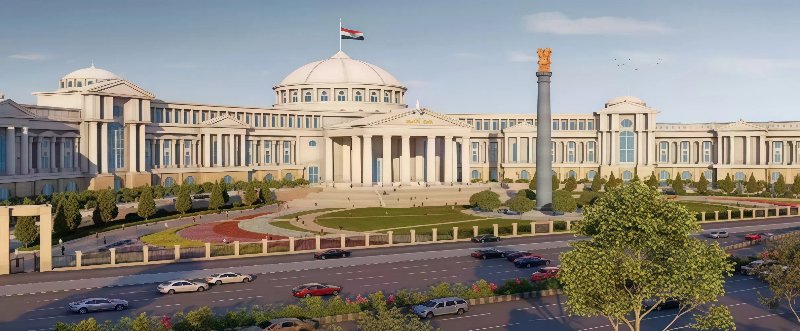NEW BOMBAY HIGH COURT: When the Bombay High Court was first built in 1878 in Fort, it stood as a commanding Gothic superstructure in colonial Mumbai. Designed by Colonel J.A. Fuller in the Early English Gothic style, it embodied the Victorian idea of justice – lofty, distant, and monumental. That building has stood the test of time for more than 145 years and still impresses. But it was designed for a very different era: fifteen judges, a handful of courts, and a city under British rule.THE NEW BOMBAY HIGH COURT

Fast forward to 2025: Mumbai and its judicial system have long outgrown the old Fort heritage complex. With 94 sanctioned judges and countless litigants and lawyers crowding its corridors, the need for a new, purpose-built court campus was undeniable. Land was finally allocated at Bandra East, and the Maharashtra Government appointed renowned architect Hafeez Contractor to design what is being called a “temple of justice” for the 21st century. Confirming this, PWD’s Chief Architect Chetan Akre said, “We have selected Hafeez Contractor to design the High Court.”
Contractor, an award-winning architect, is best known for projects such as Mumbai’s Imperial Twin Towers.
Render of the proposed Bombay High Court Complex by Hafeez Contractor. Source: Lokmat Times, Nagpur
The proposed design spans nearly 30 acres, with 75 courtrooms, judges’ residences, and modern facilities throughout. At first glance, it is monumental – a 450-metre-long semicircular façade capped with a dome rising to 70 metres. Contractor describes it as classical and neo-classical, meant to project dignity, stability, and authority.
But the design has sparked heated debate on social media platforms including LinkedIn, Instagram, and professional groups of architects and designers.
A Return to Colonial Imagery?
To many, the new High Court looks less like a modern Indian civic building and more like an echo of British imperial architecture. Its colonnades, dome, and arcades recall Lutyens’ Delhi and European capitals, rather than the material richness or climatic intelligence of contemporary Indian practice.

Critics argue this is regressive, a step backward into borrowed symbolism at a time when Indian architecture is mature enough to define its own vocabulary.
“A farcical approach to an institutional building of such importance.” — Ramu Katakam
Katakam strongly criticised the proposal, calling it regressive. He argued that such projects should be opened to international competition, allowing younger architects to create contemporary designs that honour heritage while establishing a modern architectural identity for India’s institutions. The resort to Roman columns and pediments, he said, signals that Indian architecture has taken a step back.
Render of the proposed Bombay High Court Complex by Hafeez Contractor. Source: Times of India
This raises a key question: why does a global, diverse, and culturally layered city look like a transplant from 19th-century Europe?
Is the New BHC a Symbol of Justice?
Courts should not feel inaccessible – they are not shrines. In a modern democracy, justice must convey openness, accessibility, and inclusivity.
While austere façades and monumental staircases may project authority, they risk alienating the very people the institution is meant to serve. The dullness of the proposed design would likely have disappointed Charles Correa, who sought to establish a new architectural language through works such as Jaipur’s Jawahar Kala Kendra and Bhopal’s Bharat Bhavan.
India has already produced civic structures that achieve grandeur without imitation – Raj Rewal’s Parliament Library in Delhi and B.V. Doshi’s institutions in Ahmedabad, for instance. These buildings express an Indian architectural vocabulary that balances symbolism, climate responsiveness, modern materials, and spatial openness.
The irony is stark: a “temple of justice” is being imagined with borrowed symbols rather than evolved expressions. A once-in-a-lifetime opportunity to create a civic landmark risks becoming architectural déjà vu.
Defenders of the project argue that continuity with the Gothic High Court is essential. They believe a classical arc will, like its colonial predecessor, become part of Mumbai’s legacy.
But the larger question persists: does India in 2025 need another monument that appears imported rather than evolved, especially at a time when ecological design, material honesty, and cultural specificity are so vital?
For many, the answer is no. India is capable of designing iconic civic buildings that reflect both heritage and modernity. As the saying goes: “Bharat ko akhand banana hai, swadeshi apnana hai.”
Also Read: National Museum, New Delhi — History, Architecture, and the Road Ahead
References
- https://www.cnbctv18.com/india/bombay-high-court-set-to-get-30-acre-bandra-complex-as-maharashtra-speeds-up-land-handover-19587206.htm/amp
- https://www.google.com/search?q=ramu+katakam+architect&rlz=1CDGOYI_enIN1116IN1116&oq=ramu+kata&hl=en-GB&sourceid=chrome-mobile&ie=UTF-8
- https://architecture.live/bombay-high-court-hafeez-contractor-ramu-katakam/
- https://bombayhighcourt.nic.in
- https://www.hafeezcontractor.com
- https://timesofindia.indiatimes.com/city/mumbai/30-acre-rs-3750cr-bombay-hc-complex-in-bandra-to-be-in-a-grand-old-style/amp_articleshow/123819908.cms
- https://www.linkedin.com/posts/advanirajesh_architecturally-we-have-lost-it-if-this-activity-7373583390509330432-w-Ai?utm_source=social_share_send&utm_medium=android_app&rcm=ACoAAFf_1mwBzyhwcb1i8GIcGYemKdopR7_-L80&utm_campaign=share_via
- https://lnkd.in/g7-yZdpi
- https://indianexpress.com/article/opinion/columns/where-is-swadeshi-architecture-in-atmanirbhar-bharat-10266857
- https://serendipityinblog.wordpress.com/2020/12/30/open-letter-to-william-j-r-curtis-on-iima-restoration-wanting-return-of-indian-jones-franchise/
